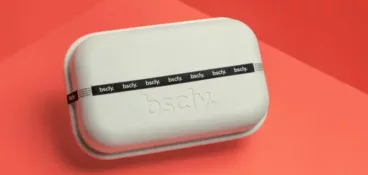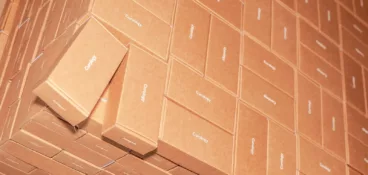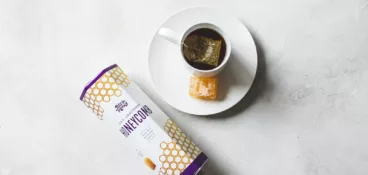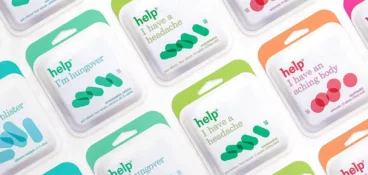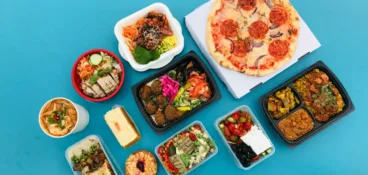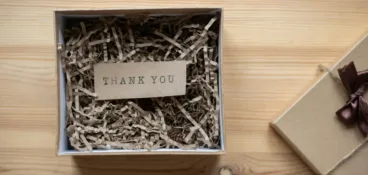It’s official. The circular economy is in.
80% of consumers are willing to pay more for sustainable products, according to a recent report.
A 2023 McKinsey report supports this, revealing that consumers will pay the highest for sustainable fresh fruit, meat, and poultry packaging.
These figures show just how seriously today’s consumers take sustainability.
Specific industries like FMCG, beauty, and personal care are seeing huge customer demand to do away with single-use plastic. Instead, today’s buyers want smart, eco-friendly materials that won’t hurt the planet.
And that’s what I’m unpacking today.
Keep reading to find out the biggest and brightest sustainable packaging ideas for 2024.
10 creative sustainable packaging ideas
Eco-friendly packaging doesn’t just save the planet and make us feel all warm and fuzzy inside.
There’s also a very real business case.
As we’ve already seen, today’s consumers want — nay, expect — your company to offer a sustainable alternative. They’re fed up with greenwashing and ready for some real action. This means how you pack your products could impact your bottom line.
I’ve rounded up ten of my favorite eco-friendly packaging ideas to delight and inspire you.
1. Compostable packaging
Consumers believe compostable packaging is the most sustainable option.
That’s why big names like Boots and Reformation are turning their attention to compostable shopping bags.
Fashion brand Reformation is known for its conscious packaging and commitment to sustainability. But its use of plastic-free and compostable bags to deliver its products is ground-breaking.
Buyers can toss the bag in their organic waste when they’re done with it, safe in the knowledge it will do no harm. Even the clothes hangers are made using recycled paper to cut down on landfill waste.
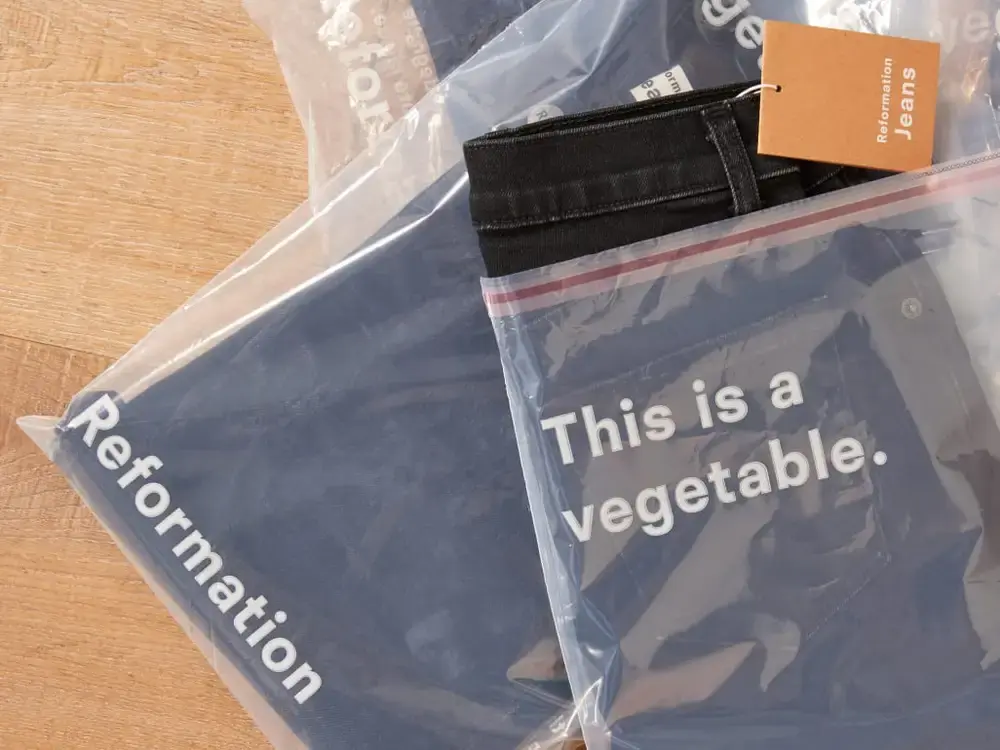
Source: Reformation
The fast way to get feedback on packaging
Get clear and collaborative comments right on top of your packaging artwork.
2. Plantable packaging
Picture this: pulp packaging you can plant.
That was Pangea Organics’ vision when it designed the first 100% compostable and plantable product packaging.
Zero waste, 100% post-consumer paper, plant-based inks, and manufactured in a wind-powered factory.
It’s a thing of beauty.
But the most exciting part is that you can plant it when you finish with the product. All you have to do is soak the fiber cover in water and plant it in shallow soil. Then, the seeds embedded in the packaging will begin to sprout. 🌱
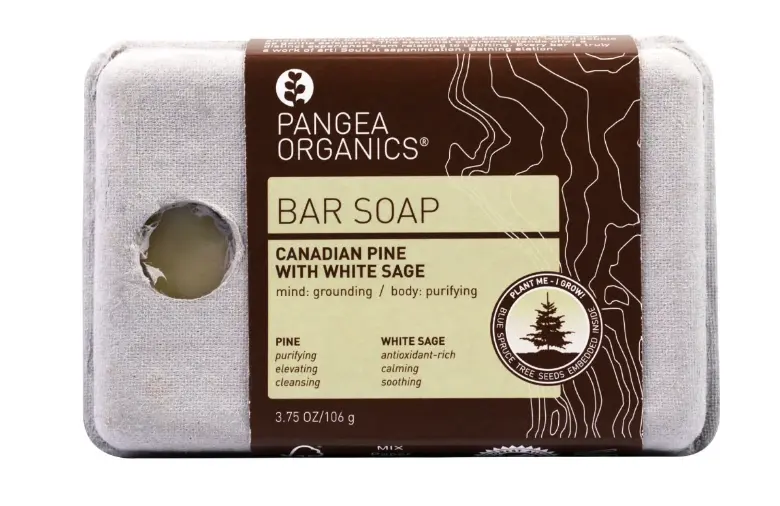
Source: the packaging cookbook
3. Edible packaging
What better way to dispose of packaging than to eat it?
That’s what Loliware Cups believes, anyway.
The brand has leveled up sustainable packaging solutions by creating flavored edible cups. Other brands, such as Evoware and Cupffee, are following suit.
Evoware creates sandwich wrappers from edible seaweed, while Cupffee makes delicious edible coffee cups that are non-GMO and heat-resistant.
No recycling plants needed.
And it doesn’t stop there.
Fashion brand TAMGA Designs is known for using sustainable materials, low-impact dyes, and carbon-neutral shipping practices. In 2017, it introduced a drinkable garment bag made from cassava starch. The starch comes from a root vegetable, meaning it naturally breaks down over several months.
Thirsty eco-warriors could also dissolve the bag in a glass of hot water and drink it.
While the brand discovered the use of cassava starch wasn’t as practical or green as it originally thought, it’s a great example of what the future of sustainable packing looks like.
4. Mushroom packaging
Waste management is a big issue in the consumer electronics industry. Polystyrene and resin may protect your products, but these materials are hard to recycle and aren’t usually biodegradable.
Dell recognized this problem and decided to attack it head-on with its 3Cs packaging strategy:
- Cube – size and shape
- Content – materials
- Curb – recyclability
Enter plant-based alternatives like mushroom packaging.
Dell’s mushroom-based polystyrene substitute is more flexible, durable, and effective than traditional polystyrene plastic. Plus, it’s 100% biodegradable.
5. Bioplastic skin
You’ve probably already heard of bioplastics.
Although they’re touted as eco-friendly because they’re made from renewable resources, they’re not naturally available. What’s more, some bioplastics aren’t biodegradable.
This led Icelandic designer Valdís Steinarsdóttir to come up with a meat packaging solution called bioplastic skin.
Made from animal skin, it looks, feels, and works the same as traditional meat packaging.
Steinarsdóttir created it by boiling animal skin in water to release collagen and gelatin, which form a gel-like substance. From there, she molded it into her shape of choice and left it to set.
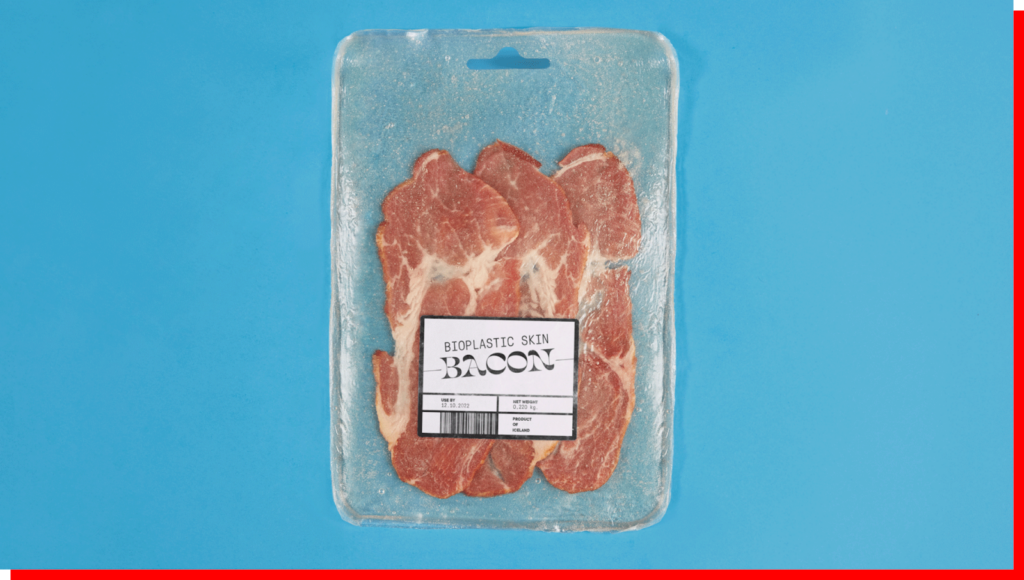
Source: Valdís Steinars
6. Furoshiki
Japan is a constant source of creative inspiration.
And Furoshiki is one of the most unique eco-friendly packaging options for gifts and other non-perishables.
Furoshiki is the Japanese art of wrapping gifts in cloth fabric. This is a great way to repurpose cloth, old clothing, or other pre-loved fabrics while creating thoughtful and beautiful packaging. Who needs wrapping paper, anyway?
It’s an especially interesting idea for fashion brands with a lot of leftover fabric to reuse.
Here’s a quick Furoshiki tutorial from the Queen of Tidying, Marie Kondo.
7. Intelligent packaging
Intelligent packaging is one of the most exciting new sustainable packaging trends at the moment.
Unfamiliar with the term?
The European Food Safety Authority defines intelligent packaging as “materials and articles that monitor the condition of packaged food or the environment surrounding the food.”
In other words, it tells you how fresh the food inside is.
This is a breakthrough for the food packaging industry because it’s not only created using eco-friendly materials, but it can prevent food poisoning, too. And by indicating when products are losing their freshness, it also helps to reduce food waste.
While food items are the most popular use case, intelligent packaging is perfect for medical and beauty products.

Source: Blue Bite
8. Cellulose
Did you know that cellulose (or cellophane) is plant-based and compostable? Because I had no idea.
Cellulose comes from the cell walls of plants and is a durable eco-friendly packaging option with minimal environmental impact.
It’s also affordable, heat-sealable, and moisture-resistant, making it ideal for food packaging.
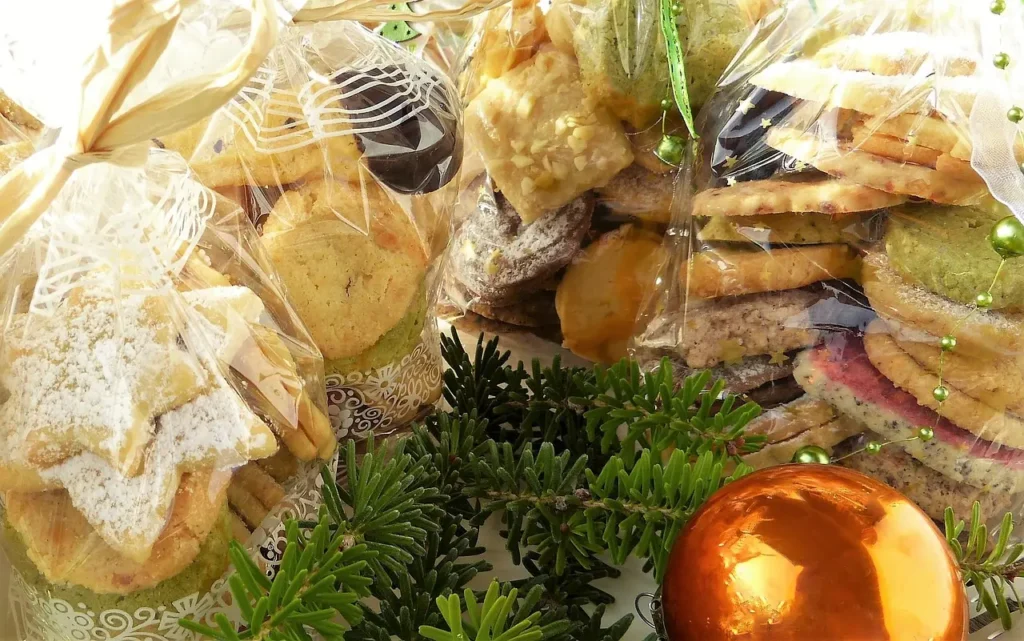
Source: Image by Silvia from Pixabay
9. Eco-friendly packaging materials
There’s a common theme running through all the latest sustainable food packaging trends: eco-friendly materials.
Cornstarch, Kraft paper, plant-based materials, returnable packaging … there’s a sea of innovative new low-impact ways to pack your products.
And speaking of the sea, many companies are turning to ocean waste for packaging inspiration.
Take cleaning product brand, Method.
It has long been an eco-conscious brand, using 100% post-consumer recycled materials for its soap bottles since 2006. But it took things up a notch in 2012 when it collaborated with Envision Plastics (a recycling partner) to create the first bottles made from plastic waste from the ocean.
The company collects plastic waste from Hawaii’s most polluted beaches to make its packaging, setting a great example for the future of sustainability.
Here’s what the co-founder, Adam Lowry, had to say:
“We’ve created a usable bottle from ocean plastic and upcycled it into something useful that can be recycled again and again.”
While the bottles may not be completely made from ocean plastics, it’s certainly a step in the right direction.
If you’re a fan of rum, you may have heard of Fitzroy Premium Navy Rum.
When plastic bags and waste started washing up along the Dutch coastline, the brand made a decision.
It recycled and reused washed-up Coca-Cola labels to create a sustainable label for its new product. The result was a stunning, marble-effect bottle cap for a luxurious packaging design. Coupled with the recycled glass flasks, it’s the planet’s first sustainable liquor package.
The bottle itself isn’t branded, encouraging consumers to reuse it as a water bottle rather than tossing it.
The perfect full-circle moment in this “waste to wasted” story.
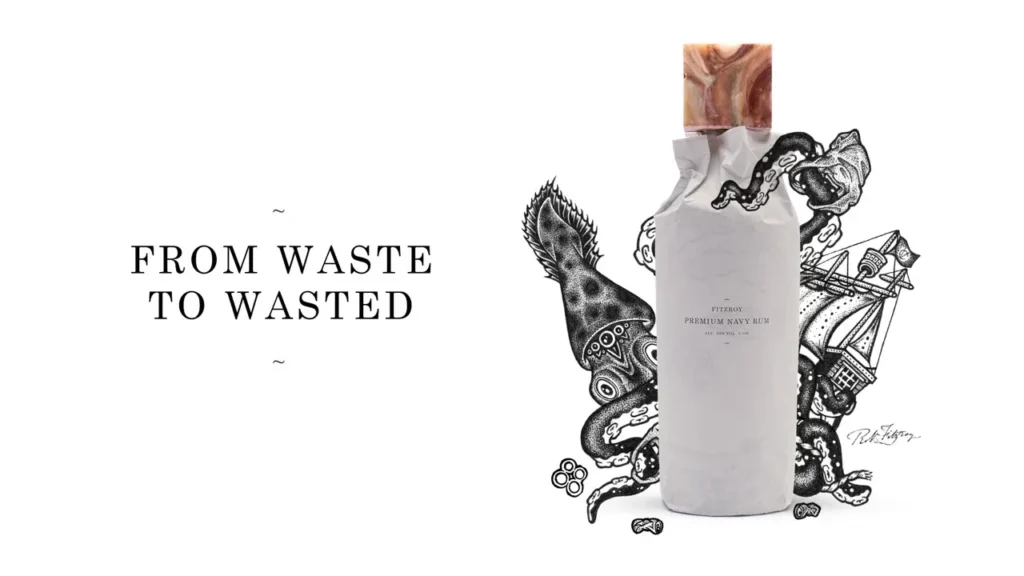
Source: Packaging of the world
10. Corrugated packaging
Corrugated boxes made from recycled materials are a great sustainable packaging solution.
In fact, a recent report showed that the corrugated packaging industry cut its greenhouse gas emissions by 50% per unit between 2006 and 2020.
Thanks to the corrugation, they’re sturdy enough to reuse and can protect sensitive or fragile products, like healthcare items or breakable food items.
Oh yeah, corrugated boxes also have antimicrobial properties to keep fruit and veg fresh for three days longer than conventional packaging.
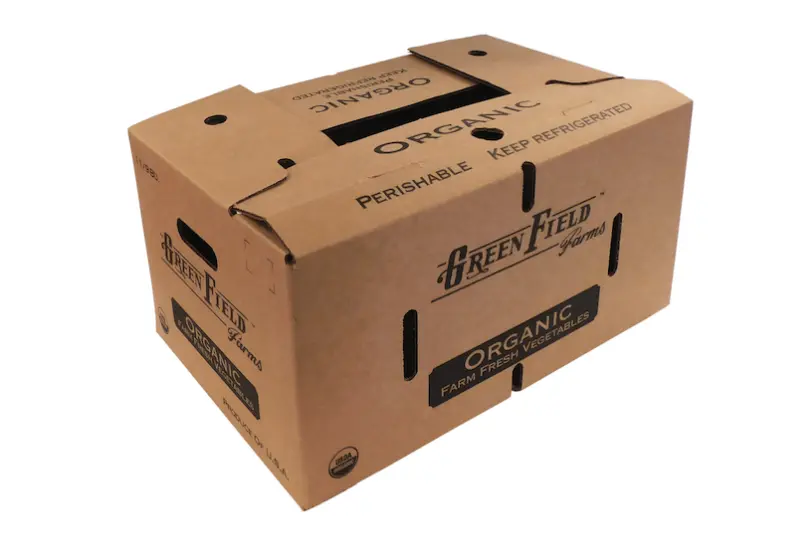
Source: The Packer
Sustainable packaging best practices
Even the most honorable of intentions can go sideways if your sustainability strategy is lacking. To avoid eco-disasters, follow these sustainable packaging best practices.
1. Improve your product labeling
A 2023 McKinsey study found that better product labeling could encourage European consumers to buy more products with sustainable packaging.
So, if you want to make sure your sustainable practices are paying off, start with your labeling design.
Here are a few examples:
- Linerless labels are a good solution for products with slower line speeds, although they may not be effective for drinks or personal care items
- Try downsizing the size of your packaging to reduce excess waste
- Experiment with double-sided labels to lower resource consumption
- Consider lightweighting (the process of using thinner labels and containers to reduce the quantity of materials needed)
Case study: Lush
Eco-friendly beauty brand Lush is a fan of lightweighting.
Lush goes for an unpackaged approach when possible, with 35% of its products being sold “naked.” But, for those items that need packaging, it uses 100% post-consumer recycled materials. Lush also sources local manufacturers and recycling services to reduce the impact of shipping.
Back in 2012, the brand made its plastic bottles 10% thinner to further cut down on the amount of plastic it uses.
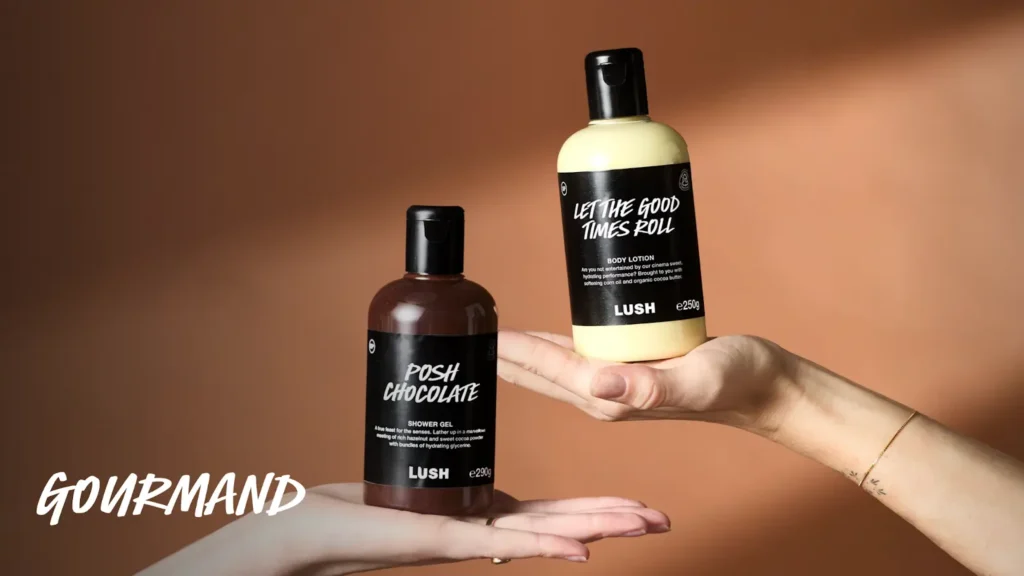
Source: Lush
2. Partner with circular shopping platforms
Circular shopping platforms partner with big consumer product retailers to cut down on single-use plastic packaging and waste. They replace single-use packets with refillable containers made from durable materials like glass or stainless steel.
The concept gives consumers more accessibility to refillable products, including a home delivery and pickup system so they can return their empty containers.
Case study: TerraCycle’s Loop
Loop is a reverse supply chain. It partners with big brands so they can sell their products in refillable and reusable packaging, and have a collection service to return used containers.
It works with big names in the consumer goods industry — like Heinz and Häagen-Dazs — who are looking for effective sustainability initiatives.
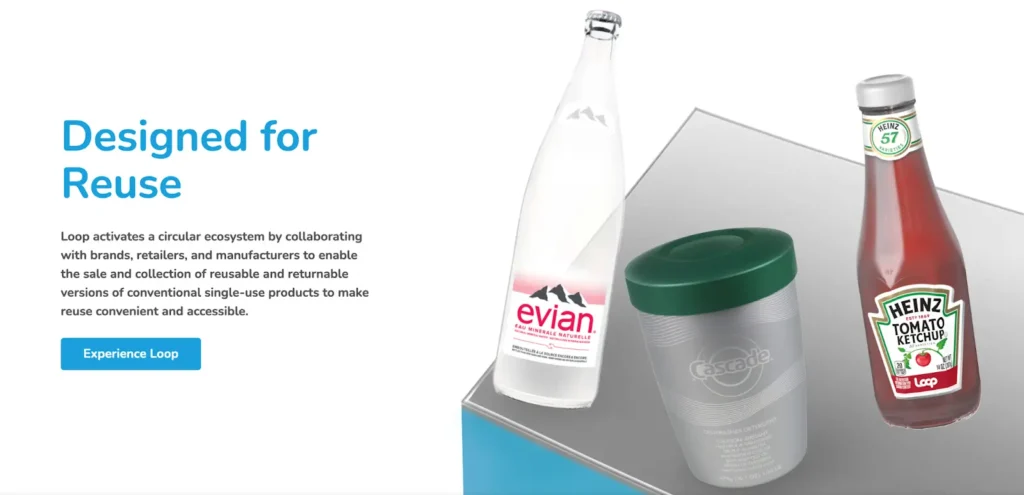
Source: Explore Loop
If your company sells beverages, Coca-Cola’s BYOB refill stations might make you think.
New research shows that the Coca-Cola company is responsible for over 50% of the world’s plastic pollution.
Needless to say, it needs to do more to reduce environmental impact.
In an effort to remove a billion PET plastic bottles from its supply chain, it created DASANI Purefill stations back in 2019.
Users can find their nearest machine on the app and fill up their personal bottles with water or other soft drinks.
3. Conjure up smarter packaging designs
Smart sustainable packaging design can help reduce waste and differentiate your brand.
So, try thinking outside the box for ways to cut down on the materials and glue your business uses in its packaging.
Case study: Unocup
Did you know that New York City alone consumes around 1.5 billion coffee lids every year? For context, that’s enough to make a line of lids 3.5x the length of the earth’s circumference.
Unocup has a groundbreaking solution.
Invented by a product designer and architect, their cups use a smart folding design to hold hot liquids without the need for a plastic lid.
The design won them a silver medal at the 2020 New York Design Awards and is one of the most exciting packaging design trends in recent years.

Source: Kickstarter
4. Think minimalist
Minimalist packaging solutions can have a pretty big payoff.
They can differentiate your brand and build trust by removing distractions. More importantly, minimalist packaging is environmentally friendly.
Why waste time, ink, and precious materials advertising your eco-friendly packaging when you can let consumers see for themselves?
Case study: Marian Obando’s sustainable duck eggs packaging
Marian Obando was asked to create sustainable packaging for four duck eggs as part of a student product.
Her minimalist design has been making waves ever since.
She made the packaging using just one sheet of newspaper, a little hay to protect the bottom of the box, and a label. The end result is a farmer’s market fan’s dream.
It just goes to show that minimalist packaging can pack a punch.

Source: TrendHunter
Special mention: Carlsberg
The plastic rings that hold six-packs of drinks together are notoriously bad for the planet. So, Danish beer company Carlsberg got rid of them by creating a special glue to hold its six packs together. Known as a “Snap Pack,” it’s set to cut plastic use by 76% (or 1,200 tons a year).
5. Optimize your review and approval process
Packaging design errors, labeling mistakes, and other quality issues can lead to product recalls and waste. This problem can be especially painful for teams creating pharmaceutical packaging.
The best way to combat this is by creating an efficient and accurate approval process. This will reduce the risk of packaging waste due to mistakes or design flaws.
An online proofing platform is your best friend here.
It allows you to optimize your packaging approval process, preventing mistakes from slipping through the cracks. Yes, this means saying goodbye to any bad packaging design choices!
For example, with Filestage, you can:
- Build seamless creative operation workflows to speed up approval time
- Create custom reviewer groups to make sure the right stakeholders have given their feedback before sign-off
- Prevent versioning chaos and create a centralized hub for creative assets
- Spot mistakes and double-check all changes have been made before sign-off (with the help of our AI tool)
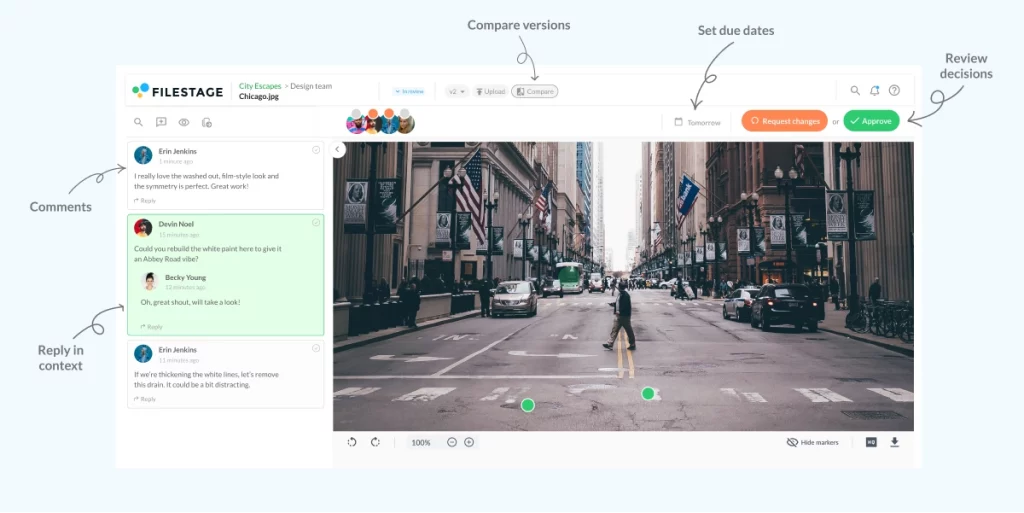
Case study: Queisser Pharma
Queisser Pharma is one of Germany’s leading pharmaceutical companies. Before Filestage, checking advertising and packaging materials was a long and scattered process.
The team struggled with non-transparent feedback, file versioning issues, and important notes getting lost in email chains.
It now has a streamlined and efficient packaging design process.
With Filestage, Queisser Pharma has built an accessible system to review creative advertising and packaging materials. Stakeholders can provide clear feedback on hard-to-pinpoint areas in packaging design and make sure that everyone involved is working on the current version.
Next steps
I hope these sustainable packaging ideas inspire you to think outside the box. More consumers care about your brand’s carbon footprint than ever before, so now’s the time to consider how you can tread lightly.
Eco-friendly materials, ethical shipping practices, and an airtight review and approval process for your packaging design are the perfect first steps.
And if you’re looking for a platform to optimize your packaging design review process, grab a free Filestage trial today.


